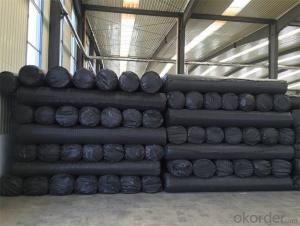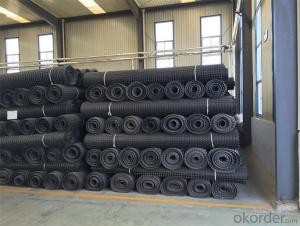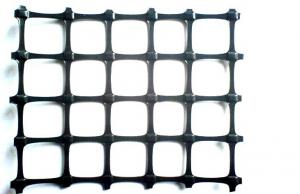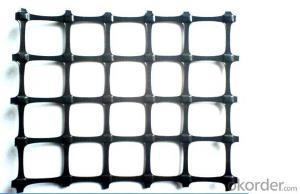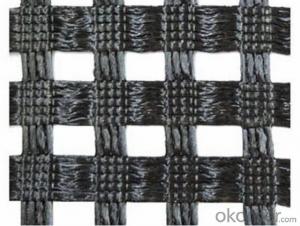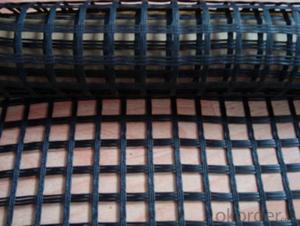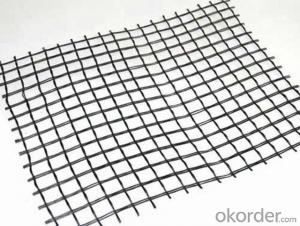High Tensile Strength Fiberglass Geogrid in Civil Engineering Construction
- Loading Port:
- China main port
- Payment Terms:
- TT OR LC
- Min Order Qty:
- 1000 m²
- Supply Capability:
- 10000000 m²/month
OKorder Service Pledge
OKorder Financial Service
You Might Also Like
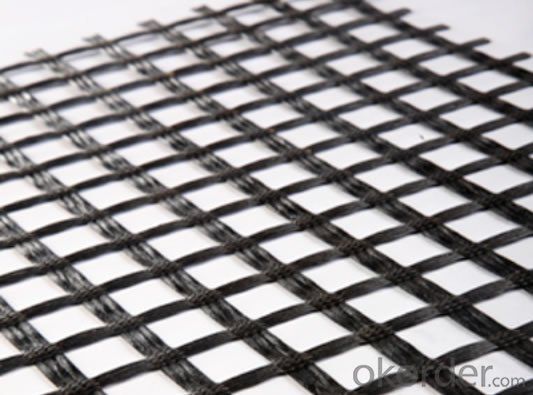
Introduction
Geogrid is widely used in civil construction over the whole world. It is manufactured on the basis of high-impact polyethylene and polypropylene. Geogrids are used as reinforcement materials on mellow soils for railway and car roads, parking places, landing grounds and for the reinforcement of bridge piers, slopes and earth banks, for erosion protection of slopes.
Main application objects of the materials:
Reinforcement of highways slopes and higher steepness slopes fixation;
Bed fixation of the various types of road surfacing;
Reinforcement of littoral zone of water reservoirs and greek beds;
Fixation of the railroad cone slopes;
Support wall construction.
“Technostroytex” LLC geogrids are a honeycomb of polyethylene bands of 1.7 mm thickness (standard), bound by ultrasonic welding joints chequerwise.
Our Service
Quality assurance
1.On a regular basis or as per your request,we entrust national testing agencies to conduct quality inspections
2. Strictly in accordance with the ISO9001-2008 international quality system standard,we monitor and manage the whole process throughout production,quality testing,and measurement to ensure product quality
3. For quality-related construction delay or substandard construction(except for damage or losses due to customer’s responsibility or irresistible natural disasters),we have refunding,replacement,and repair services.We will respond to customers’ feedbacks on quality issues within 24 hours.
Packaging & Shipping
Packing: PLASTIC FILM INSIDE, AND WOVEN BAG OUTSIDE
Shipping: About 15 days after receipt the deposit
FAQ:
Q: What kind of payments does jenor support?
A: T/T, L/C, Cash are accepted.
Q: Do you charge for the samples?
A: Accordeing to our company policy, the samples are free, we only charge the freight fee. And we will return the freight fee during the next order.
Q: Can you produce according to customers' design?
A: Sure, we are professional manufacturer, OEM and ODM are both welcome.
Q: Do you have other products?
A: Yes, please check the pictures:
- Q:How to do a good job ah? How to start the sale of geotechnical materials
- It is a composite geomembrane. The production for the anti-seepage treatment of water conservancy and hydropower, highway, railway, generally two or three layers, a film of a film or a cloth cloth two, the cloth is polyester filament geotextile membrane, generally polyethylene geomembrane, a polyethylene particles blowing or calendering production of plastic film composite filament soil fabric, composite film than general strength more requirements are higher, the typical project is "using the specified diversion project. Specification is 150/0.3mm/150, weight requirements of more than 576g/ g /, stronger than 14kn/m, CBR greater than 2.8KN.
- Q:Can geogrids be used in reinforcement of underground structures?
- Yes, geogrids can be used in the reinforcement of underground structures. Geogrids are commonly used to provide additional strength and stability to soil layers, and they can be effectively utilized in underground construction projects to reinforce the surrounding soil and prevent potential collapses or deformations.
- Q:What is the difference between geotextiles and geogrids?
- The geotextile is used to prevent seepage and the geogrid is used to reinforce
- Q:Are geogrids suitable for reinforcement of mechanically stabilized earth retaining walls?
- Yes, geogrids are suitable for reinforcement of mechanically stabilized earth retaining walls. Geogrids provide additional tensile strength and stability to the soil, increasing its overall load-bearing capacity. They help prevent soil movement, erosion, and potential wall failure, making them a reliable and commonly used reinforcement solution for retaining walls.
- Q:Can geogrids be used in wastewater treatment applications?
- Yes, geogrids can be used in wastewater treatment applications. They are often used to reinforce and stabilize the soil in treatment plants, as well as in the construction of retaining walls and embankments. Geogrids provide strength and stability to the soil, preventing erosion and promoting proper drainage in wastewater treatment facilities.
- Q:Can geogrids be used in reinforcement of foundation slabs?
- Yes, geogrids can be used in the reinforcement of foundation slabs. Geogrids are often used to increase the stability and strength of foundation slabs by providing additional support and preventing soil movement. They can help distribute the load more evenly, reduce cracking, and improve the overall performance of the foundation.
- Q:Can geogrids be used in mining tailings management applications?
- Yes, geogrids can be used in mining tailings management applications. Geogrids are often employed to reinforce and stabilize tailings dams, prevent soil erosion, and improve the overall stability of the tailings impoundment. They can also assist in controlling the settlement and deformation of the tailings, providing a reliable and effective solution for tailings management in the mining industry.
- Q:How is a geogrid different from other geosynthetics?
- A geogrid is a type of geosynthetic that differs from other geosynthetics in its primary function and structural design. Unlike geotextiles or geocomposites that are primarily used for separation, filtration, or drainage purposes, geogrids are specifically designed to provide reinforcement and stabilization to soil and other materials. Geogrids are typically made of high-strength polymers and have a grid-like structure with open apertures, allowing them to interlock with soil particles and distribute loads more effectively. This unique design enables geogrids to enhance the mechanical properties of soils, increase their bearing capacity, and improve overall stability in various civil engineering applications.
- Q:What is the effect of confinement on geogrid performance?
- The effect of confinement on geogrid performance is generally positive. Confinement helps improve the stability and load-bearing capacity of geogrids by restraining lateral movement and enhancing soil-geogrid interaction. It prevents the geogrid from elongating or deforming under heavy loads, leading to better reinforcement and increased structural integrity. Confinement also reduces the potential for geogrids to slip or creep, improving their long-term performance and durability.
- Q:What is the difference between uniaxial and biaxial geogrids?
- Uniaxial geogrids have strength and stiffness in one direction, typically along the longitudinal axis, while biaxial geogrids have strength and stiffness in both the longitudinal and transverse directions.
1. Manufacturer Overview |
|
|---|---|
| Location | |
| Year Established | |
| Annual Output Value | |
| Main Markets | |
| Company Certifications | |
2. Manufacturer Certificates |
|
|---|---|
| a) Certification Name | |
| Range | |
| Reference | |
| Validity Period | |
3. Manufacturer Capability |
|
|---|---|
| a)Trade Capacity | |
| Nearest Port | |
| Export Percentage | |
| No.of Employees in Trade Department | |
| Language Spoken: | |
| b)Factory Information | |
| Factory Size: | |
| No. of Production Lines | |
| Contract Manufacturing | |
| Product Price Range | |
Send your message to us
High Tensile Strength Fiberglass Geogrid in Civil Engineering Construction
- Loading Port:
- China main port
- Payment Terms:
- TT OR LC
- Min Order Qty:
- 1000 m²
- Supply Capability:
- 10000000 m²/month
OKorder Service Pledge
OKorder Financial Service
Similar products
New products
Hot products
Related keywords
